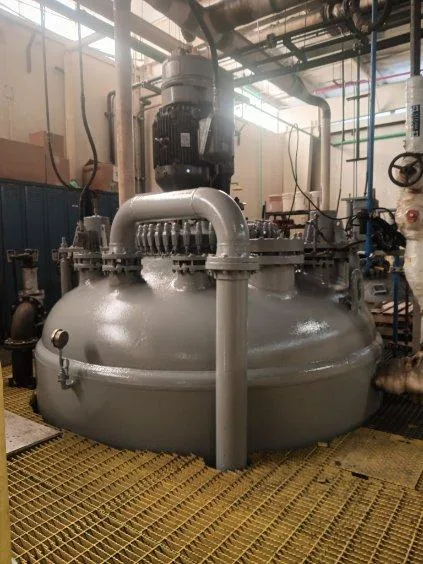
In the industrial world, there’s the potential for many different incidents that could compromise safety, such as chemical spills or wastewater containment failures. These incidents can quickly turn into major disasters, putting your business, employees, and the public at risk.
Containment coatings are designed to prevent these occurrences by reinforcing tanks, ponds, and lined basins. From the oil and gas industries to mining and agriculture to wastewater management, many sectors depend on these coatings for operational safety.
What Are Containment Coatings?
First, let’s go over what containment coatings actually are. These coatings are designed to go on the inside of tanks and sump pits, and can even be applied to walls and floors. Their main purpose is to protect against chemical spills, prevent leaks, and minimize environmental hazards.
Containment coatings can either be formulated with polyurea or resin. Polyurea coatings are known for their rapid curing times, flexibility, and extreme durability. Resin-based systems, including epoxy and urethane, are more tailored for chemical resistance.
Whichever formulation you choose, ensure it meets all relevant requirements for your industry, whether it’s EPA secondary containment rules, FDA regulations, OSHA spill control standards, or industry-specific mandates. Opt for a containment coating that has proven to meet permeability and chemical resistance requirements.
Real-world use cases for containment coatings include:
- Oil and gas: Pipeline sump pits may be lined with polyurea to prevent leaks.
- Mining/wastewater: You can line ponds and clarifier tanks with robust containment coatings to prevent contamination.
- Municipal water: Concrete tanks can be treated for potable water compatibility and corrosion resistance.

The Safety Benefits of Containment Coatings
Containment coatings are an incredibly valuable tool for improving the safety of industrial facilities. In addition to keeping everyone safe, they also help mitigate the risk of fines or shutdowns due to a lack of a certified containment system.
Let’s take a closer look at some of the most significant safety benefits of containment coatings:
Leak Prevention and Spill Containment
Containment coatings are crucial for leak prevention and spill containment. They seal against fluid migration and chemical infiltration, keeping liquids where they’re supposed to be. For example, lined wastewater clarifiers are more safe and functional than unlined alternatives.
Chemical and Corrosion Resistance
Containment coatings protect steel and concrete from aggressive chemicals like acids, alkalis, oil, and waste byproducts. When you minimize structural degradation with a durable coating, you reduce the risk of collapse or dangerous leaks, therefore improving safety.
Surface Integrity and Thickness Uniformity
Containment systems must be the same thickness all the way around. Any thin spots may indicate weakness or a lack of surface integrity. Inspection services ensure containment coatings are the correct thickness, maintaining structural performance.
Containment Maintenance and Durability
You can extend the lifespan of your infrastructure by taking advantage of services like sandblasting, recoating, and inspections. By being proactive about maintenance, you can reduce overall costs compared to reactive repairs.
Additional Benefits
Spill prevention protects nearby soil and water, safeguarding the environment from hazardous substances. Plus, when you don’t have to perform as much maintenance in dangerous zones, employees are safer.
Additionally, when you demonstrate your commitment to safety, you strengthen the confidence of the public, improving your business’s reputation and enhancing your brand’s image.

Application Process and Quality Assurance
The key to achieving containment coating durability is careful preparation and application. The process typically includes:
- Surface preparation: Sand or dry ice blasting to remove rust, oil, and debris.
- Inspection and measurement: The coatings should only be applied only after precise thickness/adhesion checks.
- Expert application: Whether polyurea or aspartic, it’s important to seek application by a coating professional to ensure even coverage over all seams and edges.
- Curing and testing: Before using the tank, it must be completely cured and pass all safety inspections.
Deciding When to Use Containment Coatings
If you’re considering a containment coating, it’s a good idea to consult with a professional. Based on the substrate type, which chemicals the infrastructure will come into contact with, expected wear scenarios, and production needs, they can help you determine whether you need a containment coating — and, if so, which type would be best.
Brush Brothers Industrial: Your Qualified Partner for Containment Coatings
At Brush Brothers Industrial, we specialize in applying quality containment coatings designed to improve the safety of your industrial facility. If you’re ready to achieve a safer, more functional workspace, contact us today to learn more about our containment coatings or schedule a consultation.
